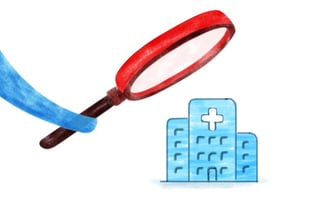May 30, 2017 | Peter Corless
May 30, 2017 | Peter Corless
 A focus on transparency and quality improvement has led The Centers for Medicare & Medicaid Services (CMS) to up the ante on how Five-Star Quality Ratings are calculated and reported.
A focus on transparency and quality improvement has led The Centers for Medicare & Medicaid Services (CMS) to up the ante on how Five-Star Quality Ratings are calculated and reported.
Since potential residents and their families, hospitals, healthcare providers and other referral sources rely on Five-Star Quality Ratings to evaluate and compare facilities, it’s critical for long-term and post-acute care providers to have a firm handle on current and future changes of the Five-Star Quality Rating System.
As margins and resident length of stay (LOS) continue to shrink, there are significant cost savings to be realized, from tighter alignment to staffing to resident needs. For example, with a tighter staffing level alignment of .1 hours per patient day (HPPD) a community can save $75,600/year (based on a 100-bed community).
However, this isn’t possible when managing staff schedules based on historical data. Staffing is a dynamic process with constant shift updates including call-offs, time-off requests, employee no-shows, fluctuations in census and more. Staffing must adjust when these issues arise to consistently hit Five-Star staffing targets.
OnShift works with thousands of senior care providers to help ensure they are hitting their staffing targets day-in and day-out. Here are a few steps you can use to ensure Five-Star staffing goals are routinely met:
1. Monitor Staffing Levels Daily
Work with schedulers and your director of nursing to examine staffing levels every day. For a short-stay population, consider creating a policy to ensure that staffing levels are checked for potential modifications more frequently, possible. Set up a process that allows staffing information to be easily accessed. OnShift's staff schedule software for senior care provides an easy-to-view dashboard that tracks and displays staffing requirements based on census against scheduled hours, helping identify any gaps so adjustments can be made.
2. Staff to Census, Acuity & Staff Activity
Make adjustments not only based on census, but also on resident acuity. With complexity of care considered in the Five-Star Quality Rating, how you staff to resident acuity can make a significant difference to your rating. Administrators and directors of nursing should consider grouping care needs based on complexity and required nursing time. When resident acuity escalates, consider redeploying staff or adding hours to ensure resident needs are met. When resident acuity levels dip, this might present the opportunity to reduce staff while still providing high quality.
In addition, it’s important to pay close attention to the activities of staff members. Family meetings, staff in-services, resident outings or unexpected admissions can consume more time than anticipated, taking caregivers away from providing direct resident care. To minimize impact, create a policy that manages these “activities” like an employee absence. For example, when caregivers are pulled away, rely on your emergency plan to help fill those shifts.
3. Make Payroll-Based Journal Reporting a Priority
It’s not a matter of ‘if’ but ‘when’ The Centers of Medicare & Medicaid Services (CMS) will use Payroll-Based Journal reporting to calculate your community’s Five-Star staffing rating. Since your Five-Star Quality Rating directly impacts your bottom line, it’s imperative you have the systems and processes in place to collect all required staffing data, and then review it for accuracy and submit it prior to the quarterly deadline. Make sure to add reportable direct care hours provided by your contractors and staffing agencies. Accuracy is key to ensuring your community gets credit for all the resident care you provide.
Nothing is more important to achieving Five-Star staffing goals than the day-to-day management of staff schedules.
OnShift's staff schedule software uses proactive processes to monitor and adjust staffing levels, even as issues arise, to help ensure that you consistently have the right staff in the right place at the right time. The end result? Your organization's ability to deliver high quality patient and resident care.
Subscribe to the OnShift Blog
Recent Posts
Categories
About Peter Corless
Peter Corless is Executive Vice President of Enterprise Development for OnShift. Peter is a recognized HR leader in post-acute care and is well-known for his achievements at some of the country’s largest post-acute care organizations, including Kindred Healthcare and Genesis HealthCare. As an experienced, chief administrative and human resources officer within these organizations, he developed strategies that reduced turnover, improved recruiting and hiring strategies, and reduced labor costs.
See for yourself why thousands of providers rely on OnShift’s innovative software for recruitment, hiring, workforce management, pay and engagement. Request your personalized demo today.
